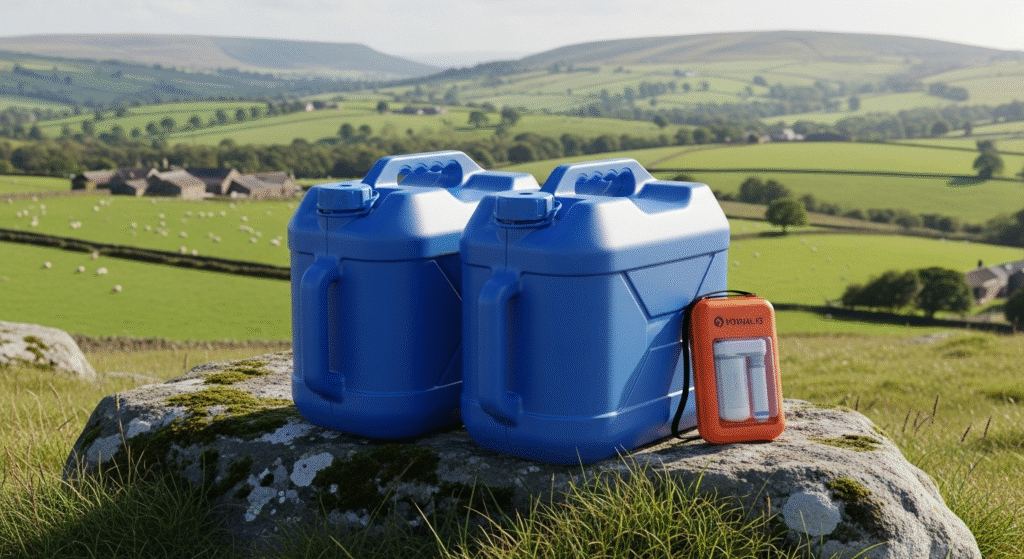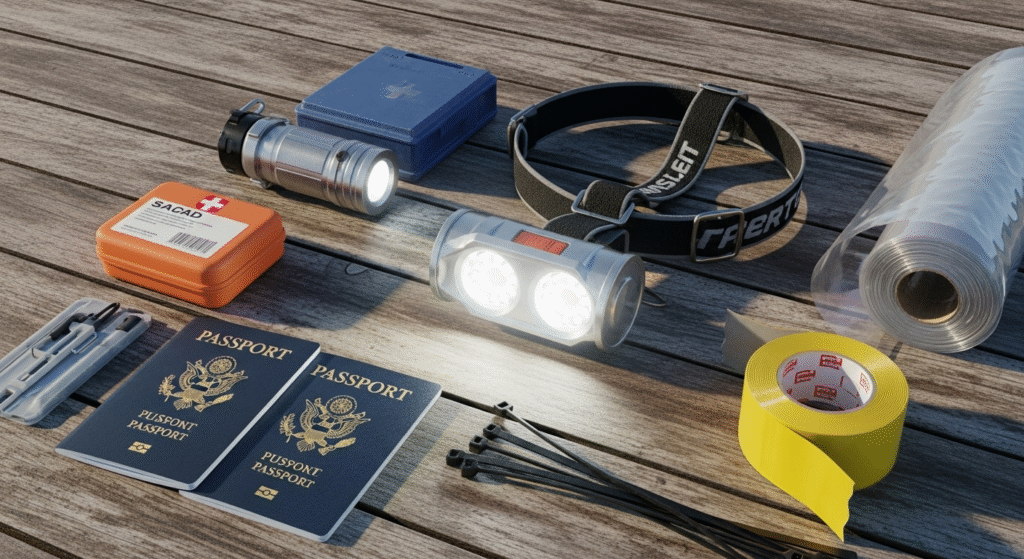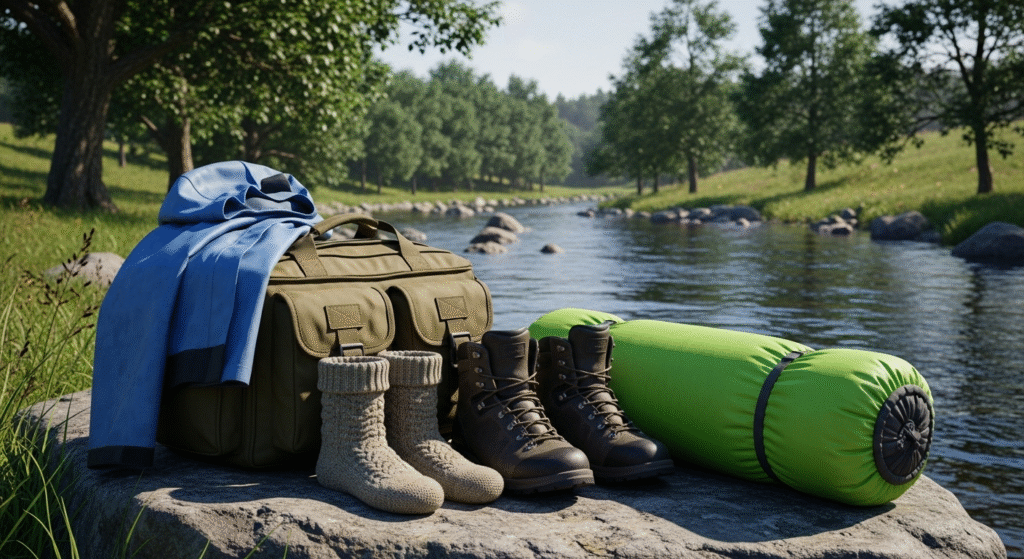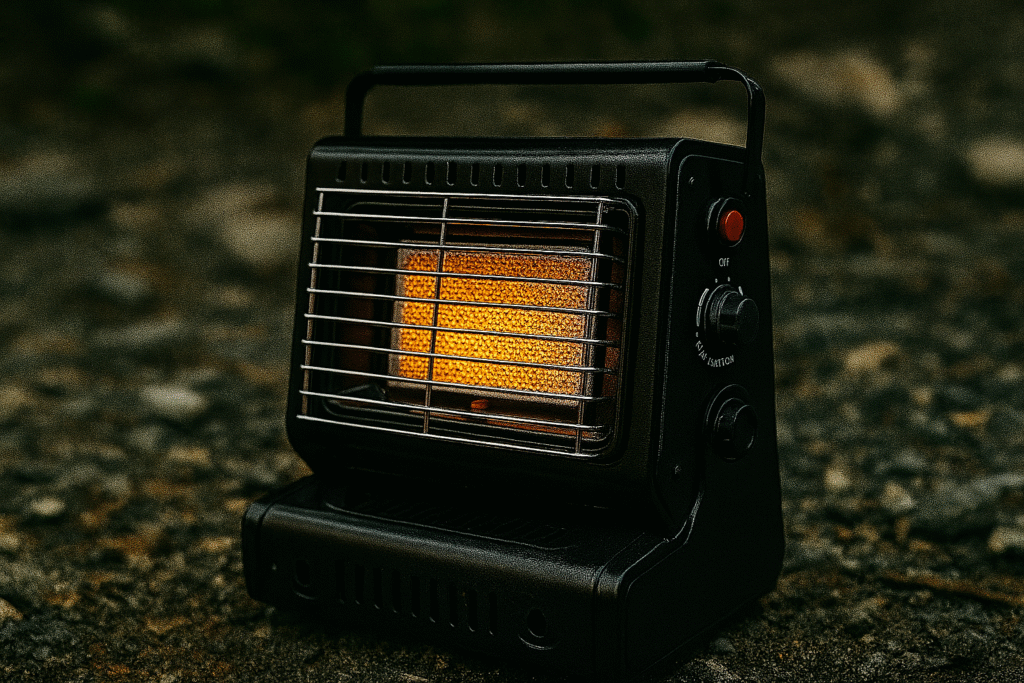When Storm Eunice battered Britain in February 2022, millions lost power, transport ground to a halt, and many families found themselves completely unprepared. With climate change bringing more extreme weather to the UK—from unprecedented 40°C heatwaves to devastating floods—emergency preparedness isn’t just sensible; it’s essential for every British household.
The UK government’s official advice at gov.uk/prepare recommends that every family should be prepared to be self-sufficient for at least 72 hours. This guide will walk you through exactly how to achieve that, step by step, without breaking the bank or turning your home into a bunker.
Understanding UK Emergency Risks: What You’re Preparing For
Most likely uk emergency scenarios
Flooding remains the UK’s most significant natural threat, with 5.7 million properties at risk. The Environment Agency issues three levels of flood warnings:
- Flood Alert (yellow): Flooding possible, be prepared
- Flood Warning (amber): Flooding expected, act now
- Severe Flood Warning (red): Danger to life, evacuate immediately
Winter storms like the “Beast from the East” can paralyse the country, bringing transport to a standstill and causing widespread power cuts. The Met Office weather warning system uses the same colour coding.
Power cuts affect every household eventually. While most last only a few hours, major incidents can leave areas without electricity for days. In emergencies, National Grid operates “Rota Load Disconnection”—planned power cuts to prevent total system collapse.
Heatwaves are becoming more severe, with the UK recording over 40°C for the first time in 2022. Many British homes lack air conditioning, making extreme heat particularly dangerous.
The UK Emergency Kit: Your 72-Hour Foundation

Essential Water Storage (10 Litres Per Person Per Day)
The UK government recommends storing 10 litres of water per person per day—significantly more than many international guidelines due to our climate and lifestyle needs. For a family of four, that’s 120 litres for three days.
Recommended Water Storage Solutions:
- 20-litre stackable containers (£25-40 each) – perfect for families
- 5-litre bottles (£8-15 each) – easier to handle and rotate
- Aquatabs water purification tablets (£8-15 per pack) – treats 8.5mg per litre
Rotate stored water every six months and store in a cool, dark place between 10-15°C.
Emergency Food: British Pantry Essentials
Focus on familiar foods that require minimal preparation. Avoid the temptation to stock exotic “survival foods” that your family won’t actually eat in a crisis.
UK Emergency Food Recommendations:
- Tinned goods: Beans, soup, vegetables (2-5 year shelf life)
- Instant meals: Pot Noodles, instant mash, porridge sachets
- British Army ORP (Operational Ration Packs) (£15-25 each) – 4,000 calories per pack
- Long-term options: Fuel Your Preparation 25-year shelf life meals (£500-800 for 6-month family supply)
Keep a manual tin opener—electric ones are useless during power cuts!
Essential UK Emergency Kit Checklist

Communication & Information
- Wind-up/solar emergency radio (BBC Radio 4 emergency broadcasts)
- Fully charged power banks (10,000mAh+ capacity)
- Written list of emergency contacts
Lighting & Power
- LED torches (not “flashlights”) with spare batteries
- Petzl headtorches (£40-150) – hands-free lighting essential
- Maglite torches (£40-215) – robust and reliable
- Emergency candles and waterproof matches
First Aid & Medications
- BS-compliant first aid kit from Safety First Aid Group (£30-150)
- 7-day supply of prescription medications
- Basic painkillers (paracetamol, ibuprofen)
- Any specific medical equipment (inhalers, insulin)
Emergency Documents
- Photocopies of ID, insurance policies, bank details
- Emergency contact list
- Local emergency service numbers (999, 111, 105)
- Recent photos of family members
Tools & Supplies
High-vis vests (UK legal requirement for roadside emergencies) – £5-15 each
Multi-tool or Swiss Army knife
Duct tape and cable ties
Plastic sheeting for emergency repairs

THE UK GRAB BAG: YOUR 72-HOUR PORTABLE KIT
A grab bag (the UK term for “bug-out bag”) should sustain each family member for 72 hours if you need to evacuate quickly. Unlike American-style military surplus approaches, UK grab bags should be practical for British weather and infrastructure.
Complete UK Grab Bag Recommendations
Premium Option: EVAQ8 Grab Bags
- EVAQ8 Pro Grab Bag (£150-400) – The UK market leader
- Pre-packed with British-specific supplies
- Meets UK government recommendations
- Available in 1, 2, or 4-person configurations
Budget Alternative: DIY Approach
- Start with a quality 50-litre rucksack (£40-80)
- BCB International survival equipment – British-made, military heritage
- Build gradually over 2-3 months to spread costs
Essential Grab Bag Contents
Clothing (UK Weather Ready)
- Waterproof jacket and over-trousers
- Warm fleece or wool jumper
- Extra socks and underwear (wool or synthetic)
- Sturdy walking boots
- High-vis vest – legal requirement for roadside stops
Food & Water (3 Days)
- 2 litres water per person minimum
- Aquatabs purification tablets
- Energy bars, nuts, dried fruit
- Boil-in-bag meals – no washing up required
Shelter & Warmth
- Emergency bivvy bag or space blanket
- Lightweight sleeping bag (British weather rated)
- Waterproof ground sheet
Critical Phone Numbers
- 999: Life-threatening emergencies (police, fire, ambulance)
- 111: NHS non-emergency medical advice
- 105: Power cut emergencies (free from mobiles)
- 0345 988 1188: Environment Agency Floodline
Government Resources
- gov.uk/prepare: Official emergency preparedness portal
- Met Office app: Severe weather warnings
- Environment Agency: Flood warnings and river levels
- Local Resilience Forum: Community emergency planning
Regional Variations
Northern Ireland: Different emergency planning structure
Scotland: Additional Gaelic language services available
Wales: Bilingual emergency services (Welsh/English)
Getting Started: Your First Week Action Plan
DAY 1-2: ASSESSMENT & PLANNING
- Register for Priority Services Register if vulnerable
- Download Met Office and Environment Agency apps
- Set up emergency communication plan withIdentify safe rooms in your home for different scenarios
Day 3-4: Basic Supplies
- Purchase 20 litres water storage per family member
- Stock one week’s worth of familiar tinned foods
- Buy basic first aid kit and torch
Day 5-7: Emergency Kit Assembly
- Create emergency contact list
- Photocopy important documents
- Set up emergency communication plan with out-of-area contact
UK-Specific Considerations
Legal Requirements
- Smoke alarms: Required by law, test monthly
- Carbon monoxide detectors: Required for gas appliances
- Pet microchipping: Legal requirement, update contact details
Insurance Considerations
- Home contents insurance: Check emergency accommodation coverage
- Flood insurance: Many standard policies exclude flooding
- Business interruption: Consider if you work from home
Community Resources
- Neighbourhood Watch: Local emergency communication
- Parish councils: Rural emergency planning
- Community centres: Often designated as emergency shelters
Budget-Friendly Emergency Prep
You don’t need to spend hundreds immediately. Start with these £20-per-week additions:
Week 1 (£20): Water containers + basic torch Week 2 (£20): Tinned foods + manual tin opener
Week 3 (£20): First aid kit + batteries Week 4 (£20): Emergency radio + power bank
Within a month, you’ll have covered the essentials for under £100.
Maintaining Your Emergency Preparedness
Regular Tasks
- Monthly: Test torches, radios, and smoke alarms
- Quarterly: Rotate food supplies, check expiry dates
- Bi-annually: Review and update emergency plan
- Annually: Replace water storage, update emergency contacts
Seasonal Adjustments
- Winter: Add extra warm clothing, check heating fuel
- Summer: Include sun protection, extra water storage
- Storm season: Review evacuation routes, secure outdoor items
Common UK Emergency Prep Mistakes to Avoid
- Underestimating water needs: 10 litres per person per day, not 2-3
- Ignoring regional risks: Coastal areas need different prep than highlands
- Over-complicating systems: Keep it simple and practical
- Forgetting children’s needs: Comfort items, appropriate clothing sizes
- Neglecting pets: Food, carriers, vaccination records
Next Steps: Building Beyond the Basics
Once you’ve mastered the 72-hour kit, consider:
- Extended food storage: 1-3 month supplies
- Alternative heating: Safe indoor options for power cuts
- Home security: During extended emergencies
- Community networking: Connect with like-minded neighbours
Conclusion: Practical Preparedness for Modern Britain
Emergency preparedness in the UK isn’t about expecting societal collapse—it’s about weathering the storms, floods, and disruptions that are simply part of British life. From Beast from the East to Storm Eunice, recent events have shown that being prepared isn’t paranoid; it’s practical.
Start small, build gradually, and focus on the most likely scenarios for your area. Your future self—and your family—will thank you when the next emergency strikes.
This guide follows UK government recommendations from gov.uk/prepare and incorporates advice from the Met Office, Environment Agency, and Civil Contingencies Act framework. Always check local authority guidance for area-specific risks and resources.
Best Emergency First Aid Kits UK 2025: BS-Compliant vs DIY Option
How to Choose a TargetEmergency First Aid Kit UK: A BS-Compliant Guide for UK and…
Winter Emergency Heating UK 2025: Safe Indoor Options for Power Cuts
Emergency Heating in the UK: Safe Solutions for Power Cuts and Winter Preparedness When…
Best Emergency Radios UK/USA 2025: Wind-Up vs Solar vs Battery Power
Best Emergency Radios for Families in the UK and US When the power goes…
AI system – threat & survival guide
AI Takeover Survival UK & US: Your Comprehensive Guide to Artificial Intelligence Uprising PreparednessAs…
Top Emergency Torches Tested: Maglite vs LED Lenser
Top Emergency Torches Tested: Maglite vs LED Lenser When disaster strikes, having a reliable emergency…
Best Emergency Grab Bags UK 2025: Complete Guide & Product Comparison
Best Emergency Grab Bags UK 2025: Complete Guide & Product Comparison When disaster strikes in…




